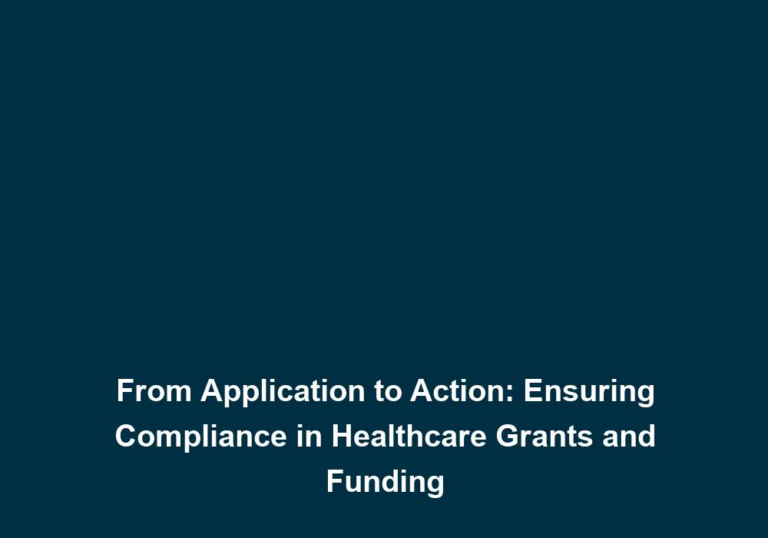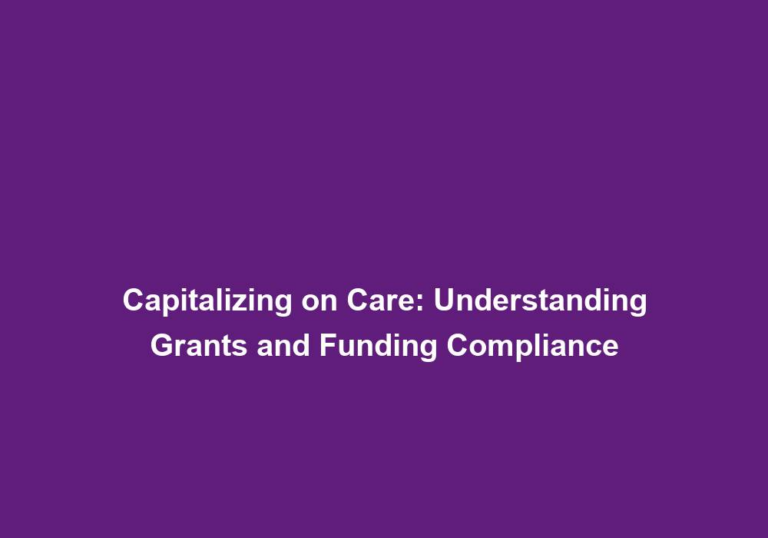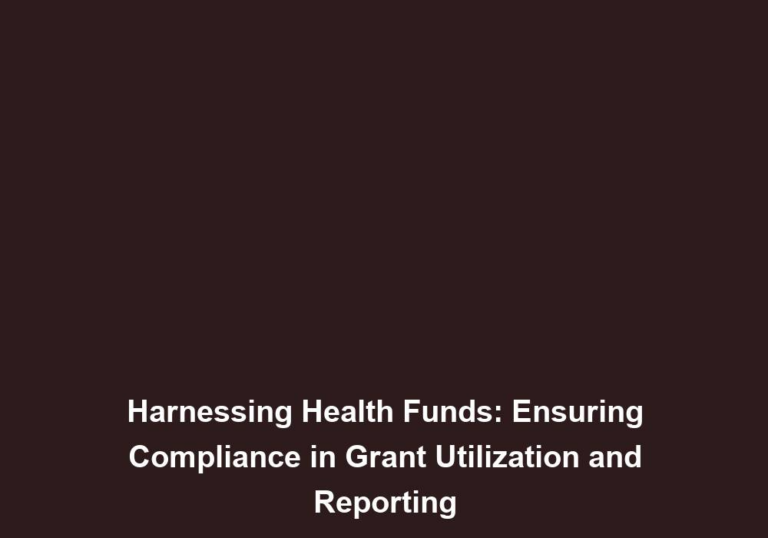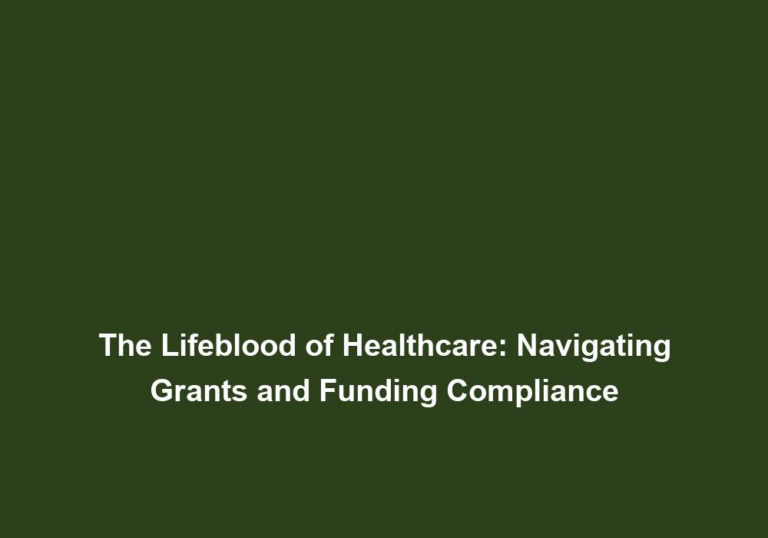Maximizing Grant Potential: Effective Utilization and Reporting Practices
In the world of nonprofit organizations and community development, grants play a crucial role in funding projects and initiatives that aim to bring about positive change. However, securing a grant is just the first step. To truly maximize the potential of grants, it is essential for organizations to effectively utilize the funds and adhere to proper reporting practices. This article will delve into the key strategies and best practices that can help organizations make the most of their grant opportunities.
1. Clear and Specific Project Planning
Before diving into the grant utilization and reporting process, it is important to have a clear understanding of the project or initiative that will be funded. By defining the goals, objectives, and outcomes that you aim to achieve with the grant funding, you can create a roadmap for how the funds will be utilized. This not only helps in effective utilization but also ensures that reporting is more focused and accurate.
Expanding on this, clear and specific project planning involves breaking down the project into smaller tasks and setting specific milestones to track progress. It is important to involve key stakeholders, such as project managers, team members, and beneficiaries, in the planning process. Their input can provide valuable insights and ensure that the project aligns with the needs and expectations of the community.
Moreover, creating a detailed timeline is crucial to manage the project effectively. By setting deadlines for each task, you can ensure that the project stays on track and that resources are allocated efficiently. This will also help in identifying any potential bottlenecks or delays early on, allowing for timely adjustments to be made.
2. Budgeting and Financial Management
Proper budgeting and financial management are critical for maximizing grant potential. It is essential to develop a comprehensive budget that outlines all the expenses related to the project. This includes not only direct costs such as personnel costs, supplies, and equipment, but also indirect costs such as overhead expenses and administrative fees.
To ensure accurate budgeting, consider conducting thorough research to estimate the costs of each component of the project. This can involve obtaining quotes from suppliers, researching market prices, and consulting with experts in the field. By having a clear understanding of the financial requirements, you can avoid underestimating or overestimating the budget, which can lead to financial challenges down the line.
Regularly monitoring and tracking expenses is equally important. Implementing a robust financial management system will enable you to keep a close eye on spending, identify any discrepancies, and ensure that the funds are being utilized as planned. This can be achieved through regular financial reports, expense tracking software, or hiring a dedicated finance professional to oversee the project’s financial aspects.
Furthermore, transparency and accountability are key principles of effective financial management. It is crucial to keep detailed records of all financial transactions, receipts, and invoices. This will not only help in reporting but also demonstrate responsible financial stewardship to grantors and other stakeholders.
3. Engage Stakeholders and Collaborate
Collaboration and stakeholder engagement are key ingredients for successful grant utilization. In addition to involving key stakeholders in the planning process, it is important to maintain ongoing communication and collaboration throughout the project’s implementation.
Engaging community members, partner organizations, and experts in the field can provide diverse perspectives and insights, leading to better decision-making and innovative solutions. By involving stakeholders, you can also ensure that the project addresses the actual needs of the community and has a higher chance of success.
Another advantage of collaboration is the potential for shared resources and increased impact. Partnering with other organizations working towards similar goals can result in cost-sharing opportunities, access to additional expertise, and the ability to reach a wider audience. This can ultimately enhance the effectiveness and sustainability of the project.
To foster collaboration, consider organizing regular meetings, workshops, or focus groups to gather input and feedback from stakeholders. Encourage open and inclusive discussions, where everyone’s opinions are valued. This will not only strengthen relationships but also create a sense of ownership and shared responsibility among stakeholders.
4. Regular Monitoring and Evaluation
To maximize the potential of grants, ongoing monitoring and evaluation are crucial. Setting up a system to regularly monitor the progress of the project and evaluate its effectiveness is essential for identifying any challenges or areas that need improvement.
Monitoring involves tracking the project’s activities, outputs, and outcomes against the established milestones and objectives. This can be done through regular progress reports, data collection, surveys, or site visits. By closely monitoring the project, you can identify any deviations from the original plan and take corrective actions in a timely manner.
Evaluation goes beyond monitoring and focuses on assessing the impact and effectiveness of the project. It involves analyzing both qualitative and quantitative data to measure the outcomes achieved and understand the project’s contribution to the desired change. This can include conducting surveys, interviews, focus groups, or utilizing existing data sources.
The data and insights gathered through monitoring and evaluation are valuable not only for internal learning but also for reporting purposes. By including this information in the reporting process, you can provide evidence of the project’s impact and demonstrate accountability to grantors and other stakeholders.
5. Effective Reporting Practices
Reporting is a vital component of grant utilization. It not only fulfills the accountability requirements but also provides an opportunity to showcase the impact of the project. To ensure effective reporting, consider following these best practices:
-
Clarity and Accuracy: Clearly communicate the objectives, activities, and outcomes of the project in a concise and understandable manner. Use data and evidence to support your claims and ensure accuracy in reporting.
-
Timeliness: Adhere to the reporting deadlines specified by the grantor. Submit reports in a timely manner to maintain a positive relationship and reputation. Late or incomplete reports may jeopardize future funding opportunities.
-
Consistency: Follow a consistent reporting format throughout the project duration. This enables easy comparison and analysis of progress over time. It is also helpful for grantors and other stakeholders who may be reviewing multiple reports.
-
Transparency: Be transparent about challenges faced, lessons learned, and any changes made to the project plan. This demonstrates honesty and integrity. It is important to provide a balanced view of both successes and areas for improvement.
-
Impact Measurement: Include both qualitative and quantitative data to measure the impact of the project. Utilize success stories, testimonials, and statistical data to showcase the outcomes achieved. This can help grantors understand the tangible results of their funding.
-
Visual Representation: Utilize charts, graphs, and visual aids to present data and outcomes in a visually appealing manner. This enhances the readability and understanding of the report. Visual representations can make complex information more accessible and engaging.
6. Building Strong Relationships with Grantors
Establishing strong relationships with grantors is important for future funding opportunities. Maintaining open lines of communication is crucial throughout the project’s lifecycle. Providing regular updates on the project’s progress, challenges overcome, and milestones achieved can demonstrate your organization’s commitment to transparency and accountability.
Expressing gratitude for the grantor’s support is also important. A simple thank-you note or a personalized message can go a long way in building rapport and showing appreciation. It is essential to highlight the impact of their funding and how it aligns with their mission and goals. This can help foster a sense of partnership and shared vision.
To nurture relationships with grantors, consider inviting them to project-related events, workshops, or community gatherings. This can provide them with firsthand insights into the project’s impact and give them an opportunity to engage directly with the beneficiaries. Building trust and rapport with grantors can lead to continued support and increased funding prospects.
7. Continuous Learning and Improvement
Maximizing grant potential is an ongoing process of learning and improvement. Actively seeking feedback from stakeholders, participants, and grantors can provide valuable insights and help identify areas for growth. This feedback can be gathered through surveys, focus groups, or individual interviews.
Staying updated on the latest trends and best practices in grant utilization and reporting is essential. Participating in relevant training programs, attending webinars, and joining professional networks can provide valuable learning opportunities. By embracing innovation and adapting strategies accordingly, nonprofit organizations can enhance the impact and effectiveness of future projects.
In conclusion, effective utilization and reporting practices are essential for maximizing the potential of grants. Clear project planning, budgeting, stakeholder engagement, monitoring, and evaluation are key aspects of successful grant utilization. Adhering to best practices in reporting ensures transparency, accountability, and showcases the impact of the project. By building strong relationships with grantors and continuously learning and improving, nonprofit organizations can unlock the true potential of grants and drive lasting positive change.







